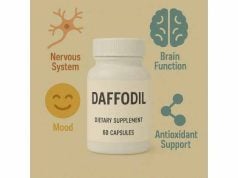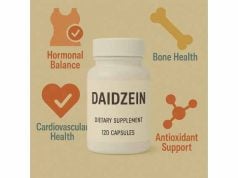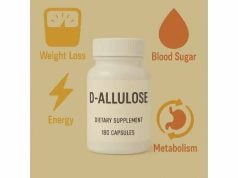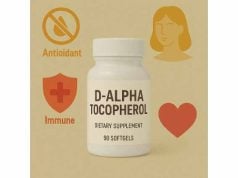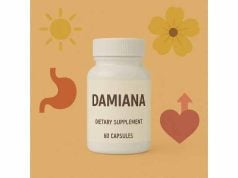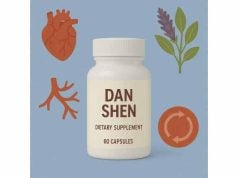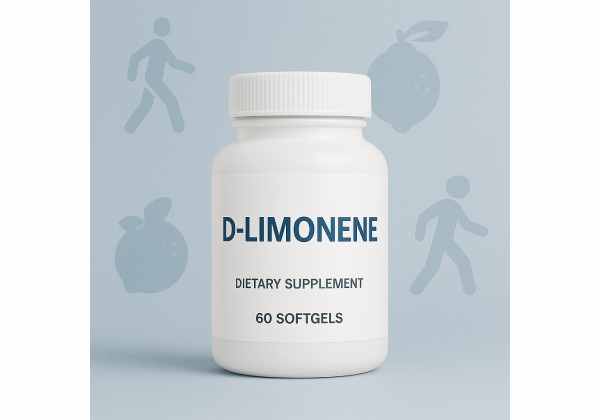
D-limonene is the citrus-scented compound that gives oranges and lemons their bright aroma. Beyond flavor and fragrance, it’s sold as a dietary supplement most often for digestive comfort, occasional heartburn, and general wellness. Early human studies suggest d-limonene concentrates in fatty tissues and may influence cell signaling pathways, while animal and lab research point to anti-inflammatory and antioxidant actions. That said, rigorous clinical trials remain limited, so expectations should stay moderate and safety first. This guide explains what d-limonene is, what the evidence shows (and doesn’t), how people typically use it, sensible dosing ranges, safety considerations, and how to choose a quality product and store it correctly. If you’re considering d-limonene—especially alongside other medications—use the information below to have an informed conversation with your clinician.
Quick D-Limonene Highlights
- May ease occasional heartburn and digestive discomfort; human evidence is limited.
- Typical supplement sizes are 250–1,000 mg; research doses up to 2,000 mg/day were short term.
- Possible side effects include nausea or loose stools; fragrance allergy risk exists with oxidized limonene.
- Avoid if pregnant or breastfeeding, if you have citrus/fragrance allergy, or if your clinician advises against it.
Table of Contents
- What is D-limonene and how does it work?
- Does D-limonene actually help reflux or digestion?
- How to take D-limonene: dose, timing, and duration
- What to look for in supplements and storage
- Side effects, interactions, and who should avoid it
- Research at a glance: what the studies show
What is D-limonene and how does it work?
D-limonene is a natural monoterpene found in the peels and essential oils of citrus fruits (especially orange). In food manufacturing, it’s a flavoring and fragrance component with long-standing regulatory recognition as “generally recognized as safe” (GRAS) when used appropriately in foods. As a supplement, d-limonene is usually delivered in softgels as a purified fraction of orange peel oil.
Mechanistically, scientists have explored several complementary actions:
- Barrier support in the upper GI tract. In preclinical models, d-limonene appears to influence mucus layer integrity and local inflammatory signaling. While this is not the same as proven clinical benefit, it offers a biologic rationale for digestive comfort uses.
- Motility and reflux dynamics. Some hypotheses propose that d-limonene may affect esophageal clearance or gastric emptying, which could matter for reflux symptoms. Human data are limited, so this remains exploratory.
- Antioxidant and cell-signaling effects. In lab and animal studies, d-limonene modulates pathways tied to oxidative stress and cell cycle regulation. In a small human study in women awaiting breast surgery, oral d-limonene accumulated in breast tissue and reduced a proliferation-related marker—suggesting tissue exposure and a plausible mechanism for ongoing research.
- Distribution in fat-rich tissues. D-limonene is lipophilic, so it partitions into adipose tissue. That trait partly explains its sustained tissue levels after repeated dosing and is relevant for both potential benefits and safety planning (e.g., duration, washout).
A few terms you may see on labels:
- “D-limonene” vs. “L-limonene.” They are mirror-image isomers (enantiomers). The “D” form is dominant in citrus oils and is what most supplements contain.
- “Orange peel oil” or “citrus oil.” Whole essential oils contain many terpenes; d-limonene is typically the major component but not the only one. Purified d-limonene products are standardized for content.
Bottom line: d-limonene is well characterized as a food flavoring and fragrance and has promising biologic activity, but clinical effectiveness for specific health outcomes—especially reflux—still requires stronger human evidence.
Does D-limonene actually help reflux or digestion?
Short answer: It might help some people with occasional heartburn or upper-GI discomfort, but solid evidence is limited and mixed. Here’s how to read the landscape:
What exists today
- Small human studies and patents from the 2000s suggested improvements in heartburn with 1,000 mg capsules taken daily or every other day for several weeks. These reports were small and not widely replicated in peer-reviewed journals, so they are considered preliminary.
- Systematic evidence on upper-GI complaints (heartburn, indigestion, dyspepsia) notes that d-limonene has biologic plausibility and some positive signals, but emphasizes the scarcity of large, high-quality randomized controlled trials and calls for better research designs. In other words, enthusiasm outpaces proof.
- Related GI data: In a modern randomized, double-blind, placebo-controlled trial for irritable bowel syndrome and functional dyspepsia, a combination supplement that included menthol, limonene, and gingerol improved symptom scores alongside standard therapy. Because this was a combination product, we can’t attribute the benefit to d-limonene alone; however, it shows that limonene is being studied clinically in GI contexts.
What to expect if you try it
- Symptom profile: People who report benefit usually describe milder, less frequent heartburn episodes or a general “settled” feeling in the upper stomach, not a complete replacement for standard GERD care. Those on prescription reflux medications should not stop them without medical guidance.
- Time course: If d-limonene helps, it often does so within 1–3 weeks. No improvement by week 3–4 suggests you should reassess with your clinician.
- Comparisons to standard care: Proton pump inhibitors (PPIs) and H2 blockers remain the mainstays for frequent GERD. Lifestyle measures—weight management, meal timing, trigger avoidance, head-of-bed elevation—consistently have stronger evidence than any single supplement.
Beyond reflux
- Bloating and functional upper-GI discomfort: Some individuals anecdotally report benefit, which aligns with proposed mucosal and motility effects. Again, controlled data are sparse.
- Lower-GI issues: There’s no compelling evidence that d-limonene alone improves constipation or diarrhea; focus remains on the upper GI tract.
Practical takeaway: d-Limonene can be considered a short-term self-experiment for occasional reflux in otherwise healthy adults who are not pregnant or breastfeeding and who do not have citrus or fragrance allergies. Treat it as adjunctive—not as a replacement for therapies with proven benefit.
How to take D-limonene: dose, timing, and duration
There is no universally accepted therapeutic dose for d-limonene. What follows reflects how products are sold, how researchers have studied it, and safety boundaries from human data.
Common supplement sizes
- Softgels typically contain 250 mg, 500 mg, or 1,000 mg of d-limonene.
- For digestive comfort, many users start at 250–500 mg once daily with a meal. If tolerated but ineffective after 5–7 days, some step up to 500–1,000 mg once daily.
Short-term trial approach (for occasional reflux/heartburn)
- Week 1: 250–500 mg once daily with food.
- Week 2–3: If needed, increase to 500–1,000 mg once daily.
- Week 4: If there’s no clear improvement, stop and reassess with your clinician. If there is improvement, consider a time-limited course (e.g., a few weeks), then take a break and evaluate whether benefits persist through lifestyle measures.
Research doses to understand the upper limit
- In oncology research exploring tissue exposure, women awaiting breast surgery took 2,000 mg/day of limonene for 2–6 weeks and achieved measurable concentrations in breast tissue with biomarker changes. This supports short-term tolerability at 2 g/day in supervised settings, but it is not a general dosing recommendation for reflux.
Timing and co-administration
- Taking d-limonene with food may reduce nausea and repeat burps (“orange burps”).
- Space it at least 2–3 hours from medications with narrow therapeutic windows until you’ve discussed potential interactions with your clinician. While significant human interaction data are limited, caution is prudent with any lipophilic compound that may interact with metabolizing enzymes in vitro.
Cycling and duration
- Because limonene accumulates in fatty tissues, a finite trial (e.g., 2–4 weeks) with a washout makes sense. Avoid continuous, open-ended use unless your clinician recommends and monitors it.
Special situations
- Sensitive stomach: Start at 250 mg every other day with food.
- Combination products: If limonene is paired with menthol/ginger or other botanicals, first confirm each ingredient’s safety for you (e.g., GERD, gallbladder history, drug interactions).
What not to do
- Do not use d-limonene to self-treat persistent or worsening reflux, trouble swallowing, unexplained weight loss, gastrointestinal bleeding, or chest pain—these require medical evaluation.
- Do not exceed label doses without a specific clinical rationale and professional oversight.
Bottom line: For otherwise healthy adults, 250–1,000 mg/day is a practical range for a short, monitored trial aimed at digestive comfort. Stop if ineffective or if side effects emerge.
What to look for in supplements and storage
1) Form and purity
- Purified d-limonene softgels (often labeled from orange peel oil) are the most common. Look for standardized content and specify D-limonene (not generic “citrus oil”).
- Third-party testing: Choose brands that publish certificates of analysis (COAs) or use recognized testing programs to confirm identity, potency, and purity (including residual solvents and heavy metals).
2) Oxidation matters for skin-sensitized individuals
- Limonene is prone to oxidation when exposed to air and light, forming hydroperoxides. These oxidized products are well-recognized fragrance contact allergens in leave-on cosmetics and personal care products. While oral supplements are not the same exposure route, those with known fragrance or citrus allergies should be cautious or avoid use altogether.
3) Packaging and storage
- Prefer airtight, opaque bottles with recent manufacture dates.
- Store cool, dry, and out of direct light. Close caps promptly to limit oxygen exposure.
- If a bottle smells unusually harsh/solvent-like compared to fresh citrus, consider discarding.
4) Complementary ingredients
- Combination formulas may pair limonene with ginger, peppermint/menthol, or artichoke. Benefits (and side effects) then reflect the whole formula, not limonene alone; assess each component for safety.
5) Label transparency
- Clear dose per capsule, total limonene per serving, other oils/excipients, and allergen statements (e.g., citrus origin) are must-haves.
- Look for contact information and lot numbers—markers of traceability and quality systems.
6) Cost and value
- Because d-limonene is a commodity terpene, price should be reasonable. Extremely cheap products may cut corners on purification, while very expensive ones rarely add meaningful value beyond branding.
7) Red flags
- Claims to “cure GERD,” “dissolve gallstones,” or “replace your medications” are unreliable and noncompliant with supplement regulations.
- Products without clear dosing instructions, missing origin information, or lacking any third-party verification deserve caution.
Practical checklist
- Start with a reputable brand, 250–500 mg strength, and 30-day supply.
- Store wisely to reduce oxidation.
- Keep notes on symptoms, timing, and any side effects to evaluate your trial objectively with your clinician.
Bottom line: Quality, freshness, and honest labeling matter more than marketing claims. Choose verified products, store them well, and use a structured trial to judge benefit.
Side effects, interactions, and who should avoid it
Typical tolerability: Most healthy adults tolerate d-limonene at common supplement doses. The most reported effects are citrus-flavored repeat burps, mild nausea, or loose stools, usually improved by taking with food or lowering the dose.
Allergy and skin sensitivity
- The biggest safety signal around limonene concerns skin contact with oxidized limonene (hydroperoxides) in cosmetics and fragrances, which can trigger allergic contact dermatitis in sensitized people. If you know you react to fragranced products, essential oils, or citrus peels, avoid oral d-limonene or discuss careful trialing with an allergist.
- People without fragrance allergy rarely develop reactions from fresh, properly stored capsules, but vigilance is wise.
Liver, kidneys, and lab markers
- Short-term human studies in otherwise healthy adults (and limited oncology investigations) have not flagged consistent, serious organ toxicity at studied doses. That said, report any persistent GI upset, dark urine, jaundice, or unusual fatigue and discontinue pending evaluation.
Drug interactions
- Rigorous human interaction studies are limited. In vitro data with terpenes show potential effects on drug-metabolizing enzymes, but the clinical relevance for typical limonene doses is unclear. To be cautious:
- Separate limonene from narrow-therapeutic-window drugs (e.g., certain anticoagulants, anti-arrhythmics) by a few hours until your prescriber approves co-use.
- If you start or stop limonene, inform your healthcare team so they can consider any needed monitoring.
Who should avoid d-limonene (or use only under medical guidance)
- Pregnant or breastfeeding individuals: Insufficient safety data for supplemental doses.
- Infants and children: Not recommended without specialist guidance.
- Citrus or fragrance allergy/dermatitis: High risk for reactions—avoid.
- Active GI disease warning signs: Black stools, vomiting blood, painful swallowing, unexplained weight loss, or chest pain—seek medical care, not supplements.
- Pre-op patients: Stop non-essential supplements 1–2 weeks before surgery unless your surgeon says otherwise.
Environmental note
- Limonene is toxic to aquatic life in concentrated forms. Do not pour essential oils or bulk terpene products down drains; follow local disposal guidance.
Emergency signs—stop and seek care
- Hives, swelling, wheezing, chest tightness, or other signs of a severe allergic reaction.
- Severe or persistent abdominal pain or vomiting.
Bottom line: Most adults tolerate short courses well, but allergy history, pregnancy/breastfeeding, and significant comorbidities warrant avoidance or clinician supervision.
Research at a glance: what the studies show
Human tissue exposure and biomarkers
- In women scheduled for breast surgery, 2,000 mg/day oral limonene for 2–6 weeks produced measurable breast-tissue levels and reduced a cell-cycle protein (cyclin D1) associated with proliferation. This confirms bioavailability to human tissues and supports continued exploration of chemopreventive hypotheses. It does not establish clinical cancer outcomes.
Upper-GI comfort and reflux
- A systematic review of nutritional ingredients for upper-GI complaints concluded that limonene’s rationale is biologically plausible, and some small human studies suggest benefit, but the evidence base is weak and better trials are needed. Practical implication: limonene may be worth a time-limited, adjunctive trial rather than a stand-alone therapy.
IBS/dyspepsia combination trial
- A randomized, double-blind, placebo-controlled study tested a combination supplement (menthol + limonene + gingerol). Symptom scores improved compared with placebo alongside standard therapy. Because limonene was not isolated, these results can’t be ascribed to limonene alone, but they add to the human clinical context in digestive health.
Safety and regulatory status
- As a food flavoring, limonene appears on the U.S. GRAS list when used as intended in foods. That status does not certify safety for all supplemental doses or medical uses, but it’s an important baseline signal for everyday dietary exposure. In clinical research, short courses up to 2 g/day have been tolerated under supervision.
Allergy landscape
- Multiple dermatology studies and reviews identify oxidized limonene hydroperoxides as common fragrance allergens. This matters primarily for topical exposure (cosmetics, personal care products). For oral supplements, it underscores the need for fresh, well-stored products and extra caution in anyone with known fragrance allergy.
Key gaps
- Large, placebo-controlled reflux trials using purified d-limonene are still lacking.
- Drug interaction studies in humans at supplement-level dosing are sparse.
- Long-term safety for chronic use is not established; short, cyclical use is more prudent until better data emerge.
Bottom line: The science supports tissue exposure and plausible mechanisms with encouraging but preliminary GI symptom data. If you try d-limonene, use it thoughtfully, track your response, and partner with your clinician.
References
- eCFR :: 21 CFR Part 182 — Substances Generally Recognized as Safe 2025 (Regulatory)
- Human breast tissue disposition and bioactivity of limonene in women with early-stage breast cancer. 2013 (Clinical Study)
- Effectiveness of Nutritional Ingredients on Upper Gastrointestinal Complaints: A Systematic Review 2022 (Systematic Review)
- Limonene and linalool hydroperoxides review: Pros and cons for routine patch testing 2022 (Review)
- Efficacy and safety of a food supplement with standardized menthol, limonene, and gingerol content in patients with irritable bowel syndrome: A double-blind, randomized, placebo-controlled trial 2022 (RCT)
Disclaimer
This guide is informational and does not constitute medical advice. D-limonene is not a treatment for gastroesophageal reflux disease or any medical condition. Always consult a qualified healthcare professional before starting, stopping, or combining any supplement with medications, and seek care promptly for alarm symptoms (e.g., chest pain, GI bleeding, trouble swallowing, unexplained weight loss).
If you found this helpful, consider sharing it with a friend or on Facebook, X (formerly Twitter), or your preferred platform, and follow us for future evidence-based guides. Your support helps us create high-quality, reader-first content.

